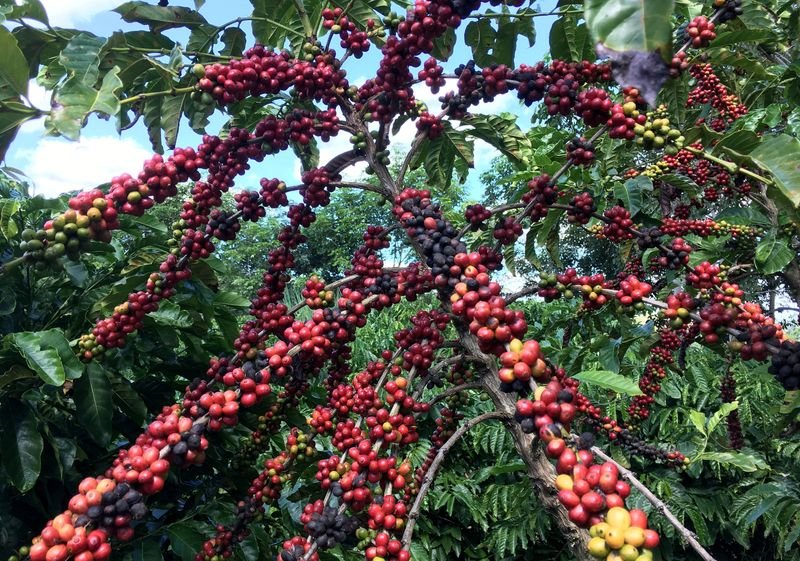Coffee Market Update: Price Movements and Factors Influencing Trends
Overview of Current Coffee Prices
Recent developments in the coffee market have shown a notable increase in coffee prices, with September arabica coffee rising by 1.26% and September robusta coffee climbing by 3.44%. This upward movement is primarily attributed to adverse weather conditions affecting Brazilian coffee production, as well as looming tariff concerns that could influence the overall market stability.
Weather Impacts on Coffee Crops
The coffee market is experiencing pressures from weather events, particularly in Brazil’s Minas Gerais region, which has recently faced a severe hailstorm. This incident has raised alarms regarding potential crop damage, stressing an already volatile market. Such weather disruptions are crucial as Brazil stands as the largest global producer of arabica coffee, and any threat to its yield can significantly affect pricing dynamics.
Tariff Concerns and Market Reactions
Markets are currently contending with the possibility of a 50% tariff on Brazilian goods should a trade agreement with the United States remain unresolved by Friday. Such a tariff would likely lead to a sharp rise in coffee prices while also potentially disrupting supply chains from Brazil. Stakeholders are closely monitoring these developments, as they could further amplify price fluctuations in the coffee sector.
Speculative Trading Insights
Recent trading activities indicate a substantial short position held by funds in the robusta coffee market. Reports show that short positions in ICE robusta futures have increased, suggesting a potentially intense short-covering rally in the near future. Such movements often create additional volatility, impacting overall market sentiment.
Harvest Progress and Predictions
Brazil’s coffee harvest is progressing faster than in previous years, with reports indicating that as of late July, the overall coffee harvest was 84% complete, surpassing both last year’s rate and the five-year average. Specifically, the robusta coffee harvest has reached 96% completion, while arabica stands at 76%. These figures can shift market expectations as traders reassess supply capabilities going forward.
In contrast, there are bearish sentiments surrounding robusta prices due to increased inventory levels. A one-year high of available robusta coffee inventories has been recorded, contrasting sharply with a notable decline in arabica coffee stocks, which recently hit a three-month low.
Recent Weather Patterns and Their Influence
Recent rainfall in Brazil has alleviated prior dryness concerns that were affecting coffee prices. In Minas Gerais, the largest arabica-producing region, rainfall exceeded the historical average by more than 200%. Such weather developments can reassure markets about crop viability, leading to price adjustments.
Export Trends and Their Economic Impact
A decline in coffee exports from Brazil may provide upward pressure on prices, as recent reports highlighted a significant year-over-year drop in green coffee exports. June saw Brazil’s total coffee exports decline by 31%, with both arabica and robusta experiencing similar downturns. Such reductions can shift market dynamics, as lower supply amidst steady demand often results in higher prices.
Long-term Production Outlook
In the long-term, projections from the U.S. Department of Agriculture indicate a mixed outlook for global coffee production. Brazilian coffee production is forecasted to see a slight increase, while production in Vietnam is expected to rebound after experiencing a decrease due to drought conditions. This diverse production landscape adds complexity to the market, as shifts in one region can influence global pricing.
Production Challenges in Vietnam
Vietnam’s coffee sector is currently grappling with significant production challenges stemming from drought. The anticipated coffee output for the 2023/24 crop year has decreased substantially, indicating potential long-term repercussions on international coffee supplies. Despite this, recent reports suggest an increase in coffee exports from Vietnam during the early part of the year, suggesting resilience in some areas of the market.
Conclusion: Analyzing Trends and Future Outlook
As the coffee market adjusts to a variety of influencing factors—from weather impacts and trade agreements to production rates—the current landscape presents both challenges and opportunities for stakeholders. The ongoing fluctuations highlight the importance of remaining attentive to shifting market conditions, which can impact coffee prices globally.
For those engaged in the coffee sector, staying informed about these trends and understanding the interplay of various market forces will be crucial for making strategic decisions moving forward. Monitoring weather patterns, trade developments, and export statistics will be essential for navigating the complexities of the coffee industry in the future.
